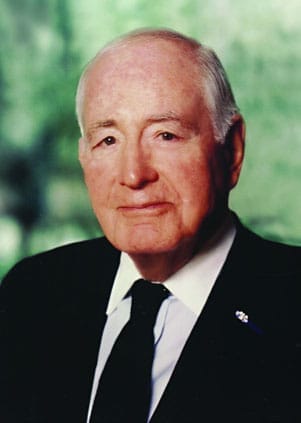When Walter Annenberg took over his father’s faltering publishing business after the older man died in 1942, few thought of him as a potential success. Yet the younger Annenberg transformed the company by anticipating demographic and cultural trends, and turned his business success into a second career in philanthropy.
Annenberg’s business beginnings were not auspicious. He left Wharton before finishing his degree, and his father’s company was millions of dollars in debt when the younger Annenberg took charge. Conservative in his politics, Annenberg was progressive in the magazine world. In the 1940s, he saw that fashion was getting younger. As the post-World War II youth culture was burgeoning, he started Seventeen magazine. It was an immediate success, selling 400,000 copies of its first issue.
He was the leader of the bandwagon for yet another post-War craze, television, launching TV Guide in 1953. It soon became the largest-circulation magazine in the country, eventually reaching 17 million copies a week. His publishing empire included the Philadelphia Inquirer, Daily News, and the Racing Form, horseracing’s most prominent publication. He also owned TV and radio stations in major market cities, including Philadelphia.
As a dominant media owner in Philadelphia, Annenberg used his properties to advance his views. He helped root out government corruption, oppose Senator Joseph McCarthy, and promote the Marshall Plan, but he also refused to allow his perceived enemies — from consumer advocate Ralph Nader to actress Zsa Zsa Gabor — to appear in the pages of his papers.
His prominence in Republican politics led President Richard Nixon to appoint him Ambassador to Great Britain in 1969. He was later honored for his service by both the U.S. (which awarded him a Presidential Medal of Freedom) and Britain (which knighted him).
Annenberg’s diplomatic appointment led him to sell off his publishing properties in 1988, when he sold TV Guide to Rupert Murdoch for more than $3 billion. Annenberg used his fortune to buy and donate art and fund educational institutions, primarily the Annenberg Schools of Communication at the University of Pennsylvania and the University of Southern California. Other gifts helped fund the Metropolitan Museum of Art, the Corporation for Public Broadcasting, and the United Negro College Fund (see William Trent Jr., WG’32 p. 68).
“Education,” he once said, “holds civilization together.”

























